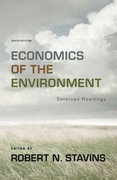Question
In November 2016, the Indian government decided to withdraw paper currency that made up more than 86 percent of the value of all rupee bills
In November 2016, the Indian government decided to withdraw paper currency that made up more than 86 percent of the value of all rupee bills in circulation. An article in theWall Street Journalpublished shortly after that decision described a small merchant in India as having "traded one customer a kilogram of potatoes, cauliflower and tomatoes for half a liter of honey. That was a good deal, he says. In normal times, the honey would be 120 rupees in the market (around $1.80) and the vegetables 70 rupees." Is this merchant's ability to arrange a barter deal with a customer an indication that the Indian economy doesn't actually require money to function efficiently? Briefly explain.
Step by Step Solution
There are 3 Steps involved in it
Step: 1

Get Instant Access to Expert-Tailored Solutions
See step-by-step solutions with expert insights and AI powered tools for academic success
Step: 2

Step: 3

Ace Your Homework with AI
Get the answers you need in no time with our AI-driven, step-by-step assistance
Get Started


